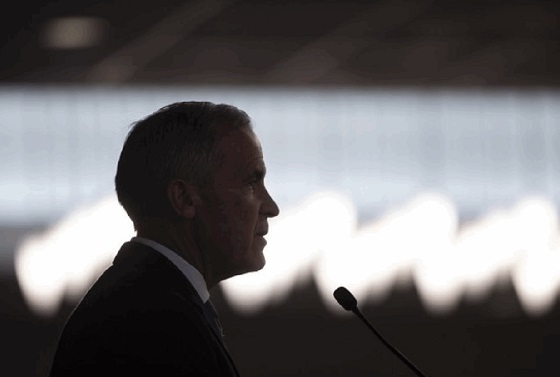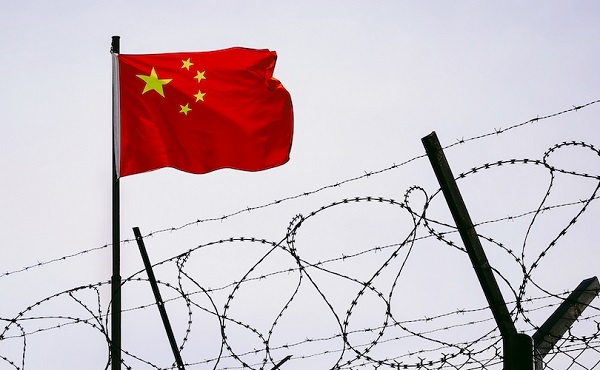Business
Federal government’s emission-reduction plan will cost Canadian workers $6,700 annually by 2030—while failing to meet government’s emission-reduction target

From the Fraser Institute
The federal government’s plan to reduce greenhouse gas emissions will impose significant costs on Canadians—while also failing to meet the government’s own emission-reduction target, finds a new study published today by the Fraser Institute, an independent, non-partisan Canadian public policy think-tank.
“The government’s plan will significantly hurt Canada’s economy and cost workers money and jobs,” said Ross McKitrick, professor of economics at the University of Guelph, senior fellow at the Fraser Institute and author of The Economic Impact and GHG Effects of the Federal Government’s Emissions Reduction Plan through 2030.
The government wants to reduce greenhouse gas (GHG) emissions to 40 per cent below 2005 levels by 2030. To meet this target, the government has enacted a series of policies including the federal carbon tax, clean fuel standards and various other GHG-related regulations such as energy efficiency requirements for buildings,
fertilizer restrictions on farms, and electric vehicle mandates.
The study finds that these combined policies will only reduce GHG emissions by an estimated 57 per cent of the government’s 2030 emission-reduction target.
And crucially, by 2030 these policies will:
• reduce Canada’s GDP by 6.2 per cent
• cost $6,700 per worker annually
• reduce employment in Canada by 164,000 jobs

“This poorly-designed plan, which will worsen the current downward trends in productivity and income, will reduce emissions but at a cost many times higher than the government’s estimated benefits,” McKitrick said.
- The federal government has set a GHG emissions reduction target of at least 40% below 2005 levels by 2030, equivalent to 38.5% below 2022 levels.
- This report examines proposed policies aimed at achieving these goals and evaluates their potential impact, aiming to address the gap left by the federal government’s lack of efforts in this matter.
- The paper uses a peer-reviewed macroeconomic model to assess the federal government’s Emissions Reduction Plan (ERP), including carbon pricing, Clean Fuel Regulations, and other regulatory measures such as EV mandates.
- It is estimated that the ERP will reduce Canada’s GHG emissions by about 26.5% between 2019 and 2030, reaching approximately 57% of the government’s 2030 target, leaving a substantial gap.
- The implementation of the ERP is expected to significantly dampen economic growth, with a projected 6.2% reduction in Canada’s economy (i.e., real GDP) compared to the base case by 2030.
- Income per worker, adjusted for inflation, is forecasted to stagnate during the 2020s and decrease by 1.5% by 2030 compared to 2022 levels.
- The ERP costs $6,700 per worker annually by 2030, which is more than five times the cost per worker compared to the carbon tax alone.
- Overall, while the federal ERP will contribute to reducing GHG emissions, it falls short of meeting the 2026 or 2030 targets and imposes significant economic burdens on Canadian households. Additionally, due to the high marginal cost of many regulatory measures, the ERP plan is costlier than it needs to be for what it will accomplish.
Author:
Business
Largest fraud in US history? Independent Journalist visits numerous daycare centres with no children, revealing massive scam

A young journalist has uncovered perhaps the largest fraud scheme in US history.
He certainly isn’t a polished reporter with many years of experience, but 23 year old independent journalist Nick Shirley seems to be getting the job done. Shirley has released an incredible video which appears to outline fraud after fraud after fraud in what appears to be a massive taxpayer funded scheme involving up to $9 Billion Dollars.
In one day of traveling around Minneapolis-St. Paul, Shirley appears to uncover over $100 million in fraudulent operations.
🚨 Here is the full 42 minutes of my crew and I exposing Minnesota fraud, this might be my most important work yet. We uncovered over $110,000,000 in ONE day. Like it and share it around like wildfire! Its time to hold these corrupt politicians and fraudsters accountable
We ALL… pic.twitter.com/E3Penx2o7a
— Nick shirley (@nickshirleyy) December 26, 2025
Business
“Magnitude cannot be overstated”: Minnesota aid scam may reach $9 billion

Federal prosecutors say Minnesota’s exploding social-services fraud scandal may now rival nearly the entire economy of Somalia, with as much as $9 billion allegedly stolen from taxpayer-funded programs in what authorities describe as industrial-scale abuse that unfolded largely under the watch of Democrat Gov. Tim Walz. The staggering new estimate is almost nine times higher than the roughly $1 billion figure previously suspected and amounts to about half of the $18 billion in federal funds routed through Minnesota-run social-services programs since 2018, according to prosecutors. “The magnitude cannot be overstated,” First Assistant U.S. Attorney Joe Thompson said Thursday, stressing that investigators are still uncovering massive schemes. “This is not a handful of bad actors. It’s staggering, industrial-scale fraud. Every day we look under a rock and find another $50 million fraud operation.”
Authorities say the alleged theft went far beyond routine overbilling. Dozens of defendants — the vast majority tied to Minnesota’s Somali community — are accused of creating sham businesses and nonprofits that claimed to provide housing assistance, food aid, or health-care services that never existed, then billing state programs backed by federal dollars. Thompson said the opportunity became so lucrative it attracted what he called “fraud tourism,” with out-of-state operators traveling to Minnesota to cash in. Charges announced Thursday against six more people bring the total number of defendants to 92.
BREAKING: First Assistant U.S. Attorney Joe Thompson revealed that 14 state Medicaid programs have cost Minnesota $18 billion since 2018, including more than $3.5 billion in 2024 alone.
Thompson stated, "Now, I'm sure everyone is wondering how much of this $18 billion was… pic.twitter.com/hCNDBuCTYH
— FOX 9 (@FOX9) December 18, 2025
Among the newly charged are Anthony Waddell Jefferson, 37, and Lester Brown, 53, who prosecutors say traveled from Philadelphia to Minnesota after spotting what they believed was easy money in the state’s housing assistance system. The pair allegedly embedded themselves in shelters and affordable-housing networks to pose as legitimate providers, then recruited relatives and associates to fabricate client notes. Prosecutors say they submitted about $3.5 million in false claims to the state’s Housing Stability Services Program for roughly 230 supposed clients.
Other cases show how deeply the alleged fraud penetrated Minnesota’s health-care programs. Abdinajib Hassan Yussuf, 27, is accused of setting up a bogus autism therapy nonprofit that paid parents to enroll children regardless of diagnosis, then billed the state for services never delivered, netting roughly $6 million. Another defendant, Asha Farhan Hassan, 28, allegedly participated in a separate autism scheme that generated $14 million in fraudulent reimbursements, while also pocketing nearly $500,000 through the notorious Feeding Our Future food-aid scandal. “Roughly two dozen Feeding Our Future defendants were getting money from autism clinics,” Thompson said. “That’s how we learned about the autism fraud.”
The broader scandal began to unravel in 2022 when Feeding Our Future collapsed under federal investigation, but prosecutors say only in recent months has the true scope of the alleged theft come into focus. Investigators allege large sums were wired overseas or spent on luxury vehicles and other high-end purchases. The revelations have fueled political fallout in Minnesota and prompted renewed federal scrutiny of immigration-linked fraud as well as criticism of state oversight failures. Walz, who is seeking re-election in 2026 after serving as Kamala Harris’ running mate in 2024, defended his administration Thursday, saying, “We will not tolerate fraud, and we will continue to work with federal partners to ensure fraud is stopped and fraudsters are caught.” Prosecutors, however, made clear the investigation is far from finished — and warned the final tally could climb even higher.
-

 Bruce Dowbiggin1 day ago
Bruce Dowbiggin1 day agoBe Careful What You Wish For In 2026: Mark Carney With A Majority
-

 Business8 hours ago
Business8 hours agoLargest fraud in US history? Independent Journalist visits numerous daycare centres with no children, revealing massive scam
-

 Energy1 day ago
Energy1 day agoNew Poll Shows Ontarians See Oil & Gas as Key to Jobs, Economy, and Trade
-

 Fraser Institute2 days ago
Fraser Institute2 days agoCarney government sowing seeds for corruption in Ottawa
-

 International2 days ago
International2 days agoNo peace on earth for ISIS: Trump orders Christmas strikes after Christian massacres
-

 Alberta2 days ago
Alberta2 days agoAlberta Next Panel calls for less Ottawa—and it could pay off
-

 Alberta1 day ago
Alberta1 day agoAlberta project would be “the biggest carbon capture and storage project in the world”
-

 Business9 hours ago
Business9 hours ago“Magnitude cannot be overstated”: Minnesota aid scam may reach $9 billion





